
- 1. Understanding Overheating of Bike Components
- 2. Causes of Overheating on Hot Asphalt
- 3. Preventive Measures to Avoid Overheating of Bike Components
- 4. Essential Bike Maintenance in Hot Weather
- 5. Real-World Case Study: Preventing Overheating in Extreme Heat
- 6. Where to Buy Bike Maintenance Gear for Hot Weather
1. Understanding Overheating of Bike Components
Overheating of bike components is a common issue, especially when cycling in hot weather conditions. As the temperature rises, various bike parts, including brakes, tires, and chains, can experience increased friction and stress, which leads to overheating. If not addressed, overheating can cause premature wear, reduced performance, and even failure of crucial components.
In particular, hot asphalt can exacerbate this issue, as the heat from the ground combined with the direct exposure to the sun can significantly raise the temperature of your bike’s components. Understanding why and how overheating occurs is the first step in preventing damage and maintaining your bike’s efficiency during hot rides.
2. Causes of Overheating on Hot Asphalt
There are several factors that contribute to overheating when cycling on hot asphalt. Let's break down the primary causes:
1. Increased Friction
When you ride on hot asphalt, friction between your tires and the road increases. This can lead to higher temperatures in your tires, which may cause them to wear down faster. Additionally, friction from the braking system generates heat that can affect the performance of your bike’s brake pads, rotors, and even the wheels themselves.
2. Excessive Heat from the Sun
The direct exposure to sunlight can cause the bike’s components, such as the chain, brakes, and tires, to heat up quickly. Asphalt, being a dark material, absorbs and radiates heat, making the surface temperature significantly higher than the surrounding air temperature, which directly impacts your bike.
3. Inadequate Ventilation
When cycling in hot weather, your bike’s components often lack the airflow needed for cooling. Areas like the braking system, where friction is constantly at play, can build up heat. Without proper ventilation, heat accumulates, resulting in poor performance and potential damage to parts.
3. Preventive Measures to Avoid Overheating of Bike Components
To prevent overheating of bike components during a ride on hot asphalt, there are several steps you can take to ensure your bike remains in top shape:
1. Choose the Right Tires
One of the best ways to reduce overheating is by choosing the right tires. Tires with a higher heat resistance or those designed for hot weather can help reduce friction on hot asphalt. Consider using tires that are specifically designed for summer cycling and offer better heat dissipation.
2. Regular Brake System Maintenance
Your bike's braking system is crucial in hot conditions. Ensure that your brake pads and rotors are clean and free from debris, as dirt can cause excess friction. Opt for heat-resistant brake pads if you plan on cycling in extremely hot conditions, as they can handle higher temperatures without losing performance.
3. Use Heat-Resistant Lubricants
Heat-resistant lubricants are essential for keeping your bike’s chain and moving parts in good working condition. Regularly lubricate the chain, derailleurs, and other moving components with a lubricant that is specifically designed to withstand higher temperatures and prevent buildup of excess heat.
4. Avoid Direct Sun Exposure
Whenever possible, try to keep your bike in the shade or cover it with a heat-resistant bike cover when not in use. This can help prevent unnecessary heating of the components before and after your ride. When cycling, try to stay on paths that offer some shade, as prolonged exposure to direct sunlight can cause excessive heat buildup.
5. Increase Airflow Around Critical Components
Ensure that your bike is well-maintained to allow airflow around critical components like the brakes and wheel hubs. Regularly check for any blockages that could restrict airflow, such as dirt or debris, and clear them promptly to improve cooling efficiency.
4. Essential Bike Maintenance in Hot Weather
When the temperature rises, bike maintenance becomes even more important. Proper upkeep can help prevent overheating and extend the life of your bike. Here are some essential maintenance tasks to perform in hot weather:
- Check Tire Pressure: Ensure your tire pressure is within the recommended range. Over-inflated or under-inflated tires can increase the risk of overheating and poor performance.
- Monitor Brake Performance: Regularly check the condition of your brake pads, cables, and fluid levels (for hydraulic brakes) to ensure they are in optimal condition.
- Clean the Chain: Clean and lubricate your bike chain regularly to reduce friction and prevent overheating of moving parts.
- Inspect Bearings and Hubs: Check your wheel hubs and bottom bracket for signs of overheating, as these parts can become stressed in hot conditions.
5. Real-World Case Study: Preventing Overheating in Extreme Heat
Consider the experience of John, an avid cyclist who regularly participates in summer cycling events in Florida. John once encountered an issue with his bike’s brake system overheating on a long ride under the intense sun. The high temperatures on the asphalt combined with the friction from his brakes caused a noticeable decrease in braking power.
To solve the problem, John took several preventive measures. He switched to heat-resistant brake pads, upgraded to summer-specific tires with lower rolling resistance, and applied a high-quality lubricant to his chain. After implementing these changes, John noticed a significant improvement in his bike’s performance, even on the hottest days. His experience is a testament to the importance of preparation and regular maintenance in preventing overheating during long rides in extreme heat.
6. Where to Buy Bike Maintenance Gear for Hot Weather
If you're looking to buy high-quality maintenance gear for your bike, check out Cycling Guider. We offer a wide range of products, from heat-resistant lubricants and tires to brake pads designed to withstand high temperatures. Explore our collection of cycling gear and accessories to keep your bike in peak condition, no matter how hot the weather gets.

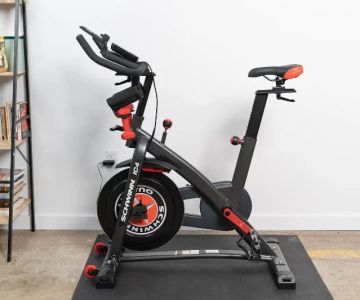

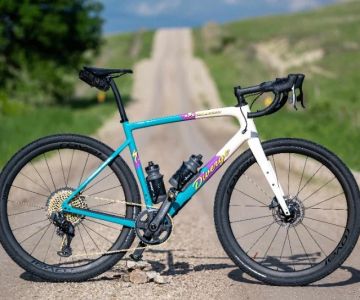

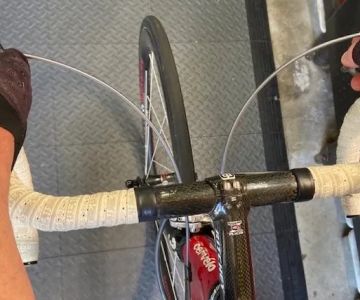

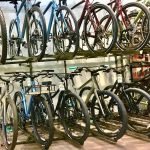 Conte's Bike Shop4.0 (212 reviews)
Conte's Bike Shop4.0 (212 reviews) Trek Bicycle Arlington Clarendon4.0 (659 reviews)
Trek Bicycle Arlington Clarendon4.0 (659 reviews) Cyclingdeal USA Inc3.0 (12 reviews)
Cyclingdeal USA Inc3.0 (12 reviews) A & D Bicycle Shop4.0 (136 reviews)
A & D Bicycle Shop4.0 (136 reviews) Bike Barn Cycling and Fitness5.0 (136 reviews)
Bike Barn Cycling and Fitness5.0 (136 reviews) Compton Bike Shop4.0 (44 reviews)
Compton Bike Shop4.0 (44 reviews) How to Teach Kids to Ride a Bike: A Step-by-Step Guide for Parents
How to Teach Kids to Ride a Bike: A Step-by-Step Guide for Parents Tips for Riding on Busy City Streets: Smart Strategies for Urban Cyclists
Tips for Riding on Busy City Streets: Smart Strategies for Urban Cyclists Best US National Parks for Mountain Biking: Ride Epic Trails Across America
Best US National Parks for Mountain Biking: Ride Epic Trails Across America Best Aero Helmets for Time Trials and Racing
Best Aero Helmets for Time Trials and Racing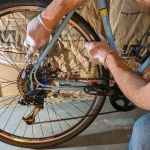 How to Clean and Lubricate Your Bike Chain Like a Pro
How to Clean and Lubricate Your Bike Chain Like a Pro 10 Must-Have Items for Long-Distance Cycling Trips
10 Must-Have Items for Long-Distance Cycling Trips